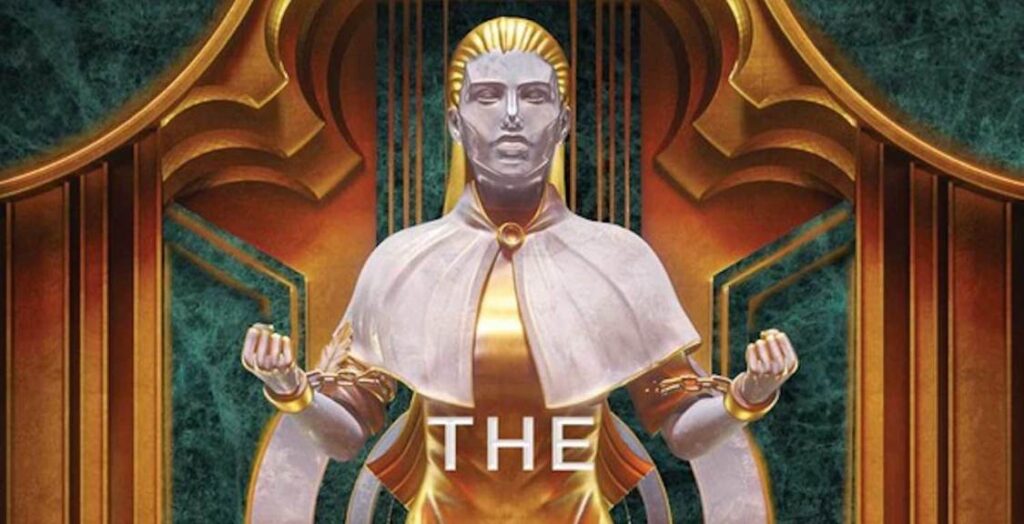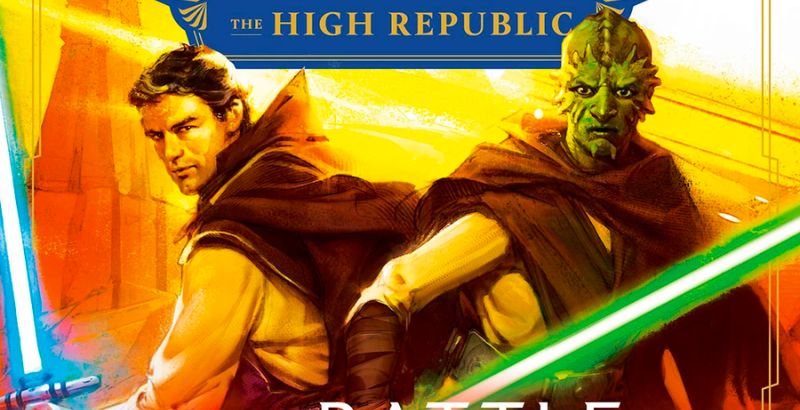The First Sister is the first book in a planned science fiction trilogy by Linden A. Lewis, published by Skybound Books and Gallery Books. Far in the future, the Gaens and the Icarii are at war. The Gaens hold dominion over Earth and Mars, and their government is intertwined with the religious order of the Sisterhood. The Icarii are confined to Mercury and Venus with their superior technology and high reliance on gene editing.
The First Sister follows three first-person perspectives in the aftermath of a major battle and a potential turning point in the war. First Sister serves on a captured Icarii spaceship in the same manner as every Sister. She is a representative of the Goddess and the Mother whose duty is to take confessions and yield to the sexual whims of the soldiers on board. However, if she can capture the favor of the ship’s new captain, Saito Ren, she will be exempt from sex with the crew and belong only to the captain. First Sister is commanded by the Sisterhood to spy on the new captain and report any treachery but has to navigate avoiding being labeled, or becoming, a traitor herself.
Lito val Lucius is an Icarii Rapier whose Dagger Hiro has gone missing and is accused of betraying the Icarii. His new neural implant-connected partner Ofiera is a superior officer, and when given the order to find and kill Hiro, Lito has to choose between duty and love. Meanwhile, Hiro, the third first-person perspective, is uniquely written through audio messages they are left for Lito in the time between their separation and Lito’s new mission. Lito’s sister Luce delivers the messages to Lito just before he takes off on his mission and the reader reads their transcripts as short chapters between First Sister and Lito’s chapters.
The world and lore of The Fist Sister are captivating. The two empires have distinct personalities and aspects that make them interesting. The Sisterhood is as concerning and cult-like as can be while the gene editing, neural implants, and advanced technology of the Icarii creates an equally concerning moral morass. The rampant gene editing of the Icarii long ago led to the evolution of an entire subspecies of humans, the Asters, who were originally edited to be ideal spacefarers, but now live in the asteroid belt and are subjugated and reviled, especially on Mercury and Venus.
The oppression of the Asters is particularly interesting because it illustrates most bluntly in The First Sister that no matter how far humanity progresses, they are still ultimately fated to bigotry. There are at least two Icarii races that survive more or less as we know them today: Latinx and Asian (split between Japanese and Chinese). There may be other races or cultures that survive as well, but these two are made evident through the names of characters, the languages they speak, and the explicit discussion about culture that occurs throughout the book. While racism may not take the same shape as it does in our world, it clearly belies the world of The First Sister. There are also hints of a solar system-wide problem with artificial intelligence that revolted against their human makers and has since barricaded humanity within the confounds of the four inner planets.
The irony of an advanced civilization that has seemingly mastered the resistance of cultures without forced assimilation subjugating the Asters is just a portion of The First Sister‘s overarching themes. Ultimately, what binds the three first-person perspective characters’ journies together is the dissolution of blind faith. Blind faith in religion, government, family, or even oneself are proven over and over in The First Sister to be deadly traps that feed into the eternal war machine and the self-serving factions on both sides. These lessons are driven home in numerous and increasingly unexpected ways while never leaving the reader feeling like they can’t trust anybody at all. Clearly, there can be a difference between blind faith and earned trust, and the latter is well-rewarded.
The pacing of The First Sister was challenging at first. With every single chapter switching perspective, it felt like the story took too long to progress and hold my interest. Eventually, the plot thickens on First Sister and Lito’s sides of the story, but the copious amounts of exposition felt glossed over to the point where I had to use my reader’s search function to remind myself of who people were and where they were. Hiro’s sections, unfortunately, almost felt unnecessary for most of the book as well.
The creative style of writing these sections as recorded messages was unique when it worked well, but most of the time they felt just like giant exposition dumps that progressed the reader’s understanding of nearly everything except for Hiro themselves. As a nonbinary character whose plot and personality largely do not revolve around their being nonbinary, it was disappointing that most of their presence in the book was utilitarian and not as their own character with agency and growth. In fact, most of their agency and growth are explicitly taken away from them as the book progresses, which is a major disappointment. The characterization we do get through the recordings and through Lito’s love and admiration for them makes me excited to hopefully see Hiro as a fully autonomous character in the sequel.
I was additionally disappointed with how, while the world of The First Sister is set up to make it clear that gender identities are universally accepted as fluid and up to individuals to determine for themselves, the narration does not match the world’s own example. There are several times where Lito especially will encounter a new character and refer to them with gendered pronouns based only on their appearance and his assumptions.
I would have expected that in a book attempting to normalize the fluidity of gender identity and nonconformity it would also affirm the changes to the language, assumptions, and interactions necessary for a complete normalization. When Lito meets a young Aster child at one point, for example, he immediately genders the child as a girl based on her appearance and personality. While this could be brushed off as an artifact of a first-person perspective told in the past tense, giving Lito time to have retroactively gendered the child based on how they told him they prefer to be referred, it nonetheless felt at several points contradictory to the message the book otherwise imparts about gender.
Lito and First Sister’s character arcs do feel a tad rushed as most of the action is packed into the final act of the book. Still, ultimately, it is the supremely interesting world that Lewis weaves that kept me captivated and interested in seeing how these two characters, in addition to other characters such as Captain Ren, the other Sisterhood members, and Ofiera, would progress as the plot thickened. By the end, I was fully captivated and invested in every character’s journey, even if they were never fully fleshed out earlier. First Sister and Lito’s twin journeys through realizing their bodies and even their minds do not fully belong to them anymore and their quests to reclaim them are deeply impactful and written to be relatable to a wide swath of readers’ experiences.
The First Sister is an interesting new world well worth a dive into. It is a fascinating introduction to a new series rife with potential going forward. While the book does not deliver on every character’s potential, particularly its nonbinary hero, the reader gets to go on a captivating journey through the eyes of its three first-person perspective characters as they learn to shirk blind trust in the institutions that raised them and reclaim their bodies and minds for themselves.
The First Sister is available wherever books are sold.
The First Sister
TL;DR
The First Sister is an interesting new world well worth a dive into. While the book does not deliver on every character’s potential and the plot does not necessarily go too far from start to end, the reader gets to go on a captivating journey through the eyes of its three first-person perspective characters as they learn to shirk blind trust in the institutions that raised them. Despite some missteps in the treatment of its nonbinary hero and a lagging front end, The First Sister is a fascinating introduction to a new series rife with potential going forward.








